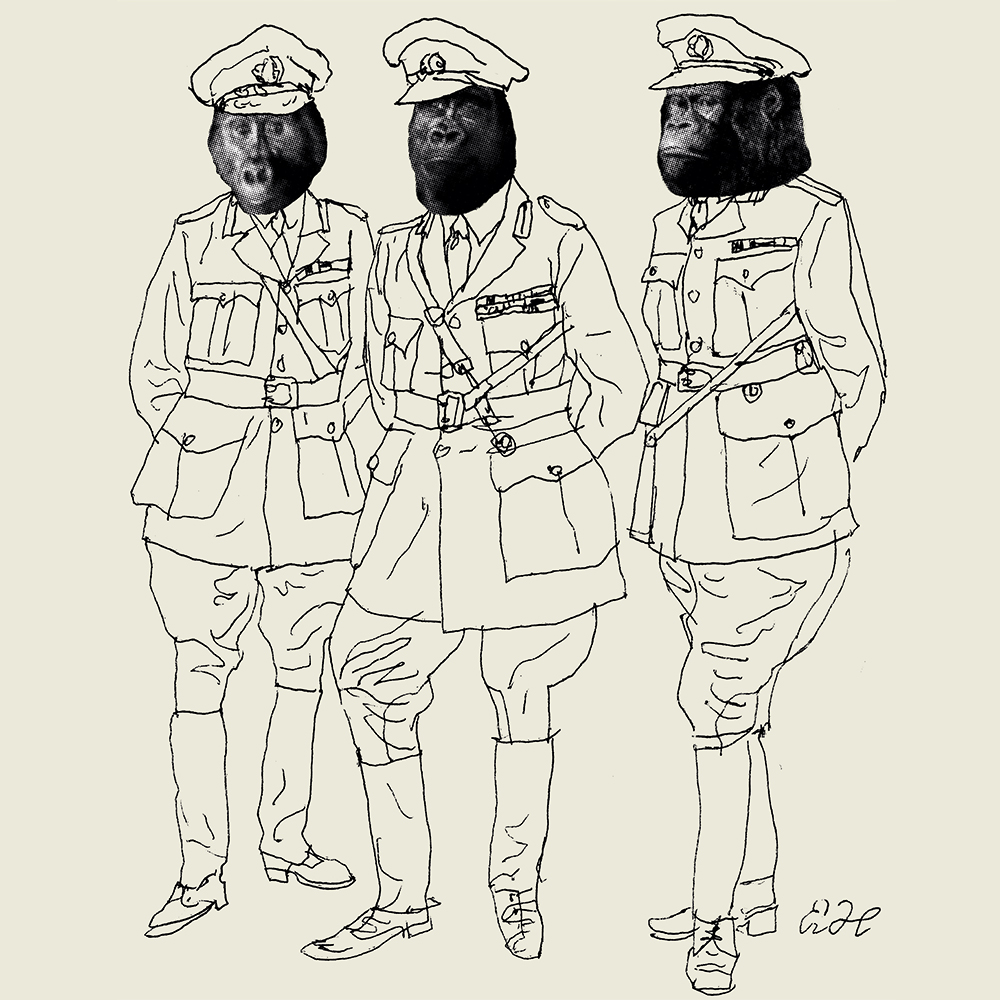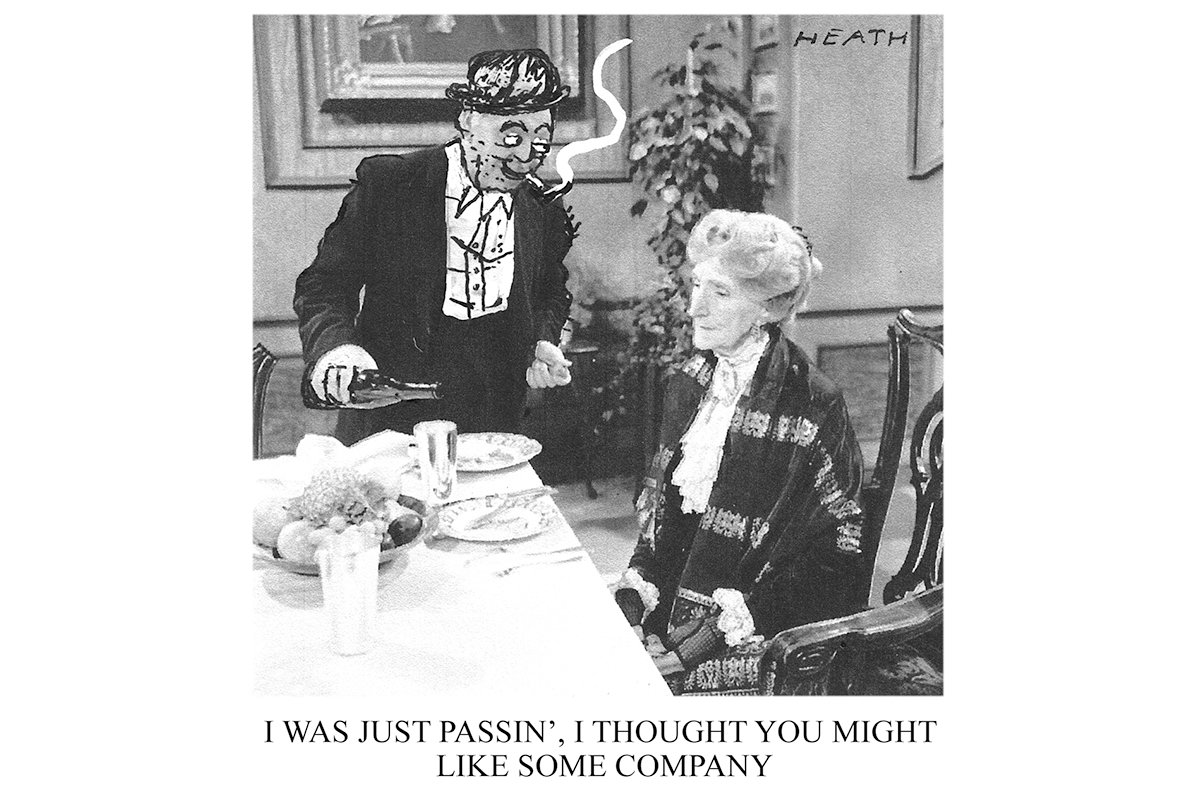Revolutions in science happen like Mike’s bankruptcy in Hemingway’s The Sun Also Rises: slowly, then suddenly. For the past two decades, neuroscientists have been interested in the ways that the human brain differs from those of other primates. The prevailing assertion among primatologists was that our genome is only 1 to 2 percent distinct from chimps’. Then in April, a team of more than a hundred of the world’s top geneticists published an article in Nature revealing that it’s actually ten times as different.
This has enormous implications. After all, if humans aren’t just souped-up chimps – as primatologists have often suggested – then many widely accepted ideas about our nature must be reconsidered. One that seems to be particularly open to rethinking revolves around our predilection for war.
When primate researchers began their field studies of chimps and gorillas in the 1970s, they supposed that apes were less violent than humans. The fact that apes killed one another was taken as proof that although they were essentially genial and benign, they had some of our savagery within them and their occasional nastiness was seen as evidence of an underlying commonality. Yet the more primatologists observed apes – chimps especially – the more apparent it became that this was not so. Chimps slay one another at rates that exceed those of many human populations by hundreds or even thousands of times.
Thus, by the early years of this century, anthropologists began to assert that humans were more “prosocial” than apes – in other words, that we are more inclined toward empathy and cooperation. It was a belated admission that what they had been claiming during the 1970s was entirely backwards – and that was ratified by the research of neuroscientists studying the parts of the brain associated with our feelings of compassion and connection to others.
Neuroscience shows how our brains focus us upon satisfying communal codes of behavior. Social rejection causes stimulation of the same parts of our brain as those activated by bodily discomfort. In humans there is actually a neural link between feelings of isolation and physical pain.
Nonetheless, presuming that humans should be understood simply as more advanced apes, anthropologists interpreted the phenomenon of war as a demonstration of how innately violent we are. Perhaps, though, there is another explanation. Maybe it is not a bloodlust that pushes us to violence, but rather our docility.
Desperate as we are for acceptance, we yearn to be part of the in group. Combined with our tameness, this desire for acceptance causes young men who lack a sense of identity to be led into war. It is not so much animalistic impulses toward violence as it is obedience that makes us so dangerous.
We can see other examples across the animal kingdom. The ant is the most war-like of all creatures – and also one of the most obedient. This would also explain why the animals we use in battle – dogs, pigeons, elephants, horses and camels – are docile. War is the action of a tame, cooperative being. This even explains the real purpose of military training. Shaving off a recruit’s hair, providing him with a uniform, drilling him in marches, teaching him to salute: the instruction is imposed to make him compliant and to offer him an identity. Similarly, a soldier’s attachment to his unit is based not in aggressive impulses but in feelings of devotion.
He does not go over the top of the trenches because he hates the enemy across no man’s land – he does it because the leader he’s loyal to tells him to. Those emotions are cultivated further as he is taught to venerate fallen comrades and to resign himself to the possibility of his own untimely demise. That passion for a noble death isn’t encountered in apes. Not surprisingly then, there’s no documented case of a primate committing suicide. Yet more humans kill themselves each year than are murdered. What animals appear to end their lives deliberately? Other tractable creatures such as ants – animals that either fight wars or assist in ours.
All this offers hints that our wars primarily arise from our willingness to obey the orders of psychopathic overlords, not from a chimp-like savagery. That would also explain why democracies in which women possess the right to vote have been far less likely to go to war with each other. That might be because of a part of the brain that functions differently in humans and chimps, the anterior cingulate gyrus. Studies have revealed that there is a correlation between its size and the capacity for empathy, and it’s been found that this area tends to be larger in women than it is in men.
More remarkably, whether it’s working properly has been shown to be an indicator of whether a prison inmate is capable of avoid repeating mistakes. Criminals with poor function in the rear of the cingulate gyrus are more prone to recidivism.
Without autocrats guiding us we don’t easily incline toward collective violence. This point was well understood by Stanley Milgram, the famous (or infamous) figure whose experiments demonstrated that ordinary people could be persuaded to place high-voltage shocks on one another when they were instructed to do so by an authority figure. Milgram noted that if the figure was absent then test subjects wouldn’t engage in acts of torture.
So how were the rest of us persuaded that a creature who frets about whether he is choosing the right shade of drapes and worries about what his neighbors think of his lawn ornaments is as instinctively brutal and rapacious as a chimp? Maybe this is a further proof of how docile and obedient we are. We simply believed what we were told.
This article was originally published in The Spectator’s November 10, 2025 World edition. It is adapted from the author’s new book, The Primate Myth.























Leave a Reply